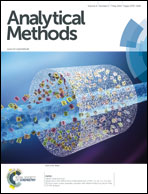Generation and characterization of airborne ethyl 2-cyanoacrylate atmospheres in a human whole-body exposure unit
Abstract
Exposure to air contaminants, such as chemical vapors and particulate matter, poses important health hazards at workplaces. Short-term experimental exposure of human subjects to chemical vapors and particles is a promising attempt to investigate acute effects of such hazards. In the EU, there is an increasing need for regulatory agencies to derive health-based threshold limits based on human inhalation studies. Ethyl 2-cyanoacrylate (ECA) is the most widely used adhesive, both in industrial and domestic applications. ECA-containing vapors are irritating to the skin, eyes and respiratory system. In Germany, no occupational threshold limit value has been derived for ECA. A necessary prerequisite for inhalation challenge tests is the development of a suitable method to generate and characterize ECA test atmospheres for human whole-body inhalation studies. To address this, we developed a method to evaporate pretreated ECA with the help of a calibration gas generator. Experimental proof of the quantitative evaporation process was attained with a wipe test. The determination of airborne ECA concentrations in our exposure unit was established using chemical ionization real time mass spectroscopy taking into account temporal stability, different relative humidities and the presence of subjects in the chamber. Finally, we also developed a 5-step ECA inhalation challenge test.


 Please wait while we load your content...
Please wait while we load your content...